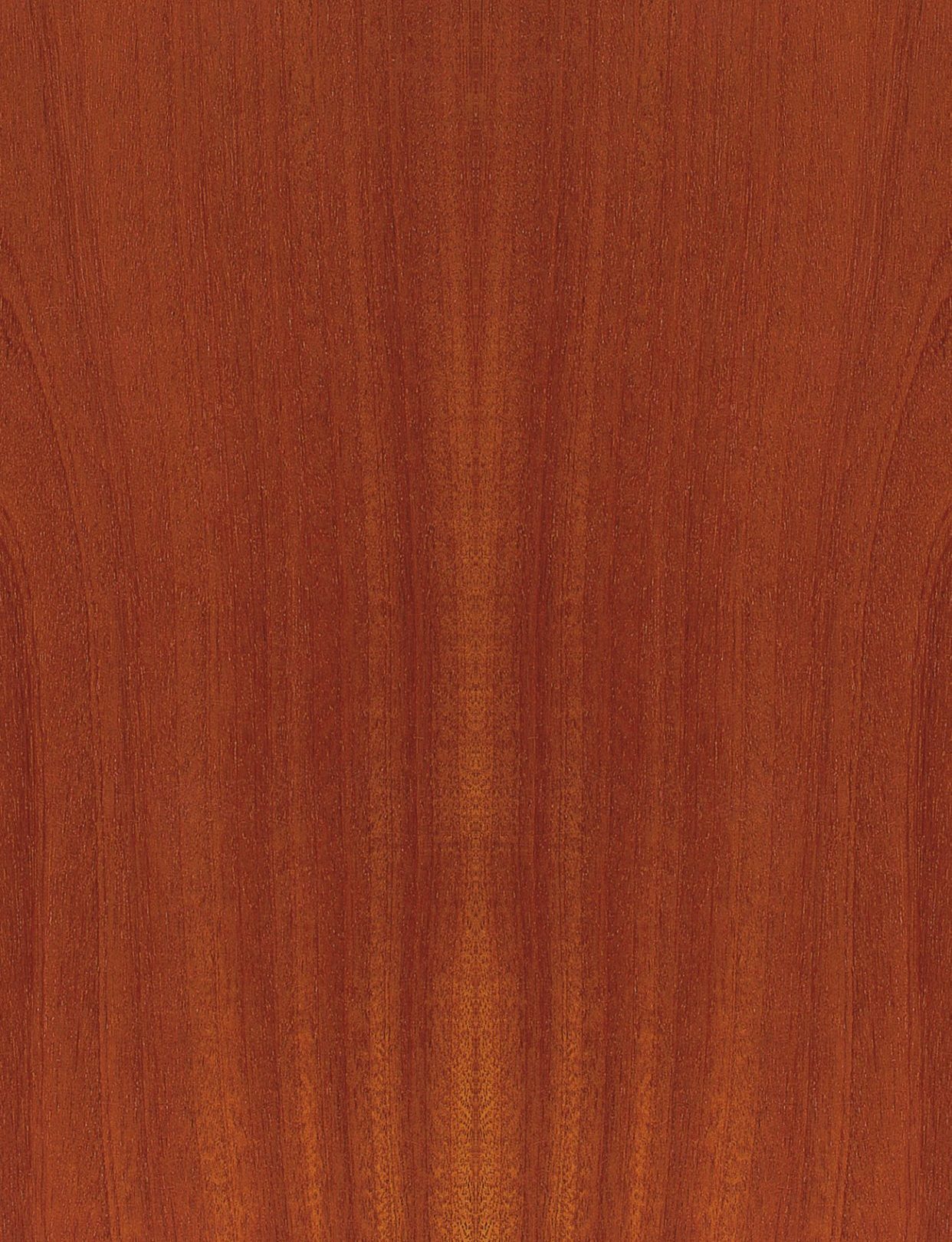
Sapele
Entandrophragma cylindricum

Trade Names
Sapele
Origin
Africa
Range
West, Central and East Africa, Liberia, Ivory Coast, Ghana, Nigeria, Cameroon, Gabon, Congo, Angola, Zaire and Uganda.
Uses
Sliced veneer for faces, furniture, paneling, parquet flooring, doors, pianos and construction lumber.
Properties
Weak pink to dark red heartwood, quickly darkening to a red brown in time. Aboudikro-Sapele, which generally grows along the Ivory Coast, normally is darker than the wood from other growing areas. Blocks with numerous bark pockets, color defects or pin knots are not suitable for veneer production. There is a heavy demand for narrowly streaked blocks (pencil stripe) with an average diameter of 1 m and over.
Machining
Sapele is easily worked with hand and machine tools despite of a certain hardness. Only irregular fibre grains make it difficult to produce smooth surfaces.
Seasoning
Kiln seasoning is difficult because Sapele has a marked tendency to distort when dried too quickly. This is why drying must be carried out very slowly and carefully so that the lumber is not degraded.
Finishing
The wood takes well to stains, varnishes and polishes but the resin exudation must be considered and, if necessary, washed out.
Jointing
No difficulty to produce joints with glue, screws and nails, all of which are durable.

